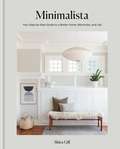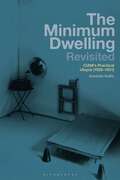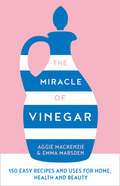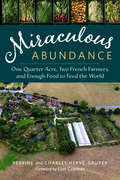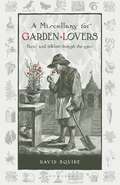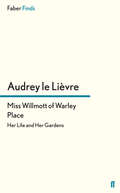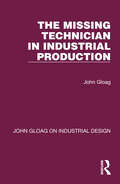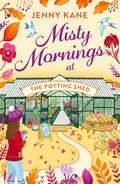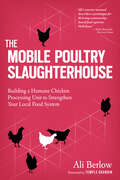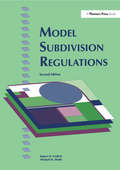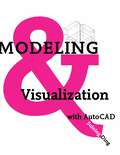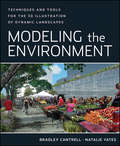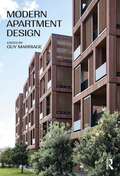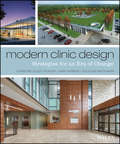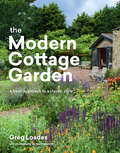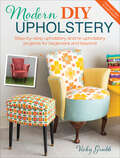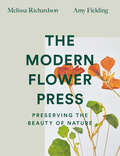- Table View
- List View
Minimalista: Your step-by-step guide to a better home, wardrobe and life
by Shira Gill***"I identified with so many of the important lessons Shira teaches in Minimalista. Now I'll know what book to recommend when people ask me to help them on their journey towards minimalism!" - Garance Doré, New York Times Best Selling Author of Love Style LifeElevate your personal style, trim your belongings, and transform your life, one room at a time, with this visionary lifestyle and home organisation book from organising expert, Shira Gill.As a professional home organiser with clients ranging from students to multi-millionaires, Shira Gill observed that clutter is a universal stress trigger. Over the years she created a signature decluttering and organisation process that promotes sustainability, achieves lasting results, and can be applied to anyone, regardless of their space or lifestyle. Rather than imposing strict rules and limitations, Shira redefines minimalism as having the perfect amount of everything - for you - based on your personal values and the limitations of your space. Now, in Minimalista, Shira shares her complete toolkit for the first time, built around five key steps: Clarify, Edit, Organize, Elevate, and Maintain. Shira teaches that the most important thing you can do is start, and that small victories, achieved one at a time, will snowball into massive transformation. Broken into small, bite-sized chunks, Minimalista makes it clear that if the process is fun and easy to follow, anyone can learn the principles of editing and organisation.The Minimalista Manifesto· Buy less; live more.· Invest in high quality + solid craftsmanship.· Opt for natural, sustainable materials.· Treat your space + your stuff with respect.· Shop your own home before hitting the stores.· Celebrate life's little luxuries: fresh flowers, hot water, a good meal with friends.· Try to repair instead of replace.· Embrace negative space and dispose of unwanted items responsibly.· Create a home that supports your personal goals + core values.· Be the gatekeeper of your home.· Say "no" to swag, freebies, and hotel samples.· Say "no" to excess and "yes" to enough.
The Minimum Dwelling Revisited: CIAM's Practical Utopia (1928–31)
by Professor Aristotle KallisThis book provides an intellectual history of the modernist "minimum dwelling", exploring how early modernism saw mass housing as a primary vehicle for achieving the utopian transformation of society. It reappraises the often-overlooked 2nd and 3rd CIAM conferences (1929-31), addressing their engagement with the "minimum dwelling" and revealing them both as milestones in the organisation's annals and as seminal moments in the history of interwar modernism.In 1929, an eclectic international group of avant-garde modernist architects, including Ernst May, Mart Stam, Walter Gropius and Le Corbusier, met in Frankfurt for the second instalment of the CIAM conferences. They discussed a design programme for cost-effective, good-quality housing, seeking new approaches and processes to maximize quality and functionality while ensuring affordability for the wider population. In exploring the meaning and form of the 'minimum dwelling', they also re-defined dwelling as the hub of a new way of living, proposing a revolutionary multi-scalar approach to urban design based on the concept of the Existenzminimum ('optimally minimal housing').Despite the two conferences falling short of the organizer's expectations, and being overshadowed by later instalments, the participating architects sanctioned a semantic shift from minimum as bare necessity to a very different, aspirational, kind of minimalism – transforming the entire conversation on mass low-cost dwelling in design, social and ethical terms.Split into two parts, The Minimum Dwelling Revisited first takes a genealogical approach to explore the provenance of the concept of "minimum dwelling" prior to the 2nd and 3rd CIAM conferences, it then traces the proceedings of the two conferences themselves. Addressing the origins of the "minimum dwelling" concept but also its legacies, and serving as a corrective to the overemphasis on 4th CIAM conference and the Athens Charter, the book is essential reading for scholars researching urban design during the Interwar period.
The Minimum Dwelling Revisited: CIAM's Practical Utopia (1928–31)
by Professor Aristotle KallisThis book provides an intellectual history of the modernist "minimum dwelling", exploring how early modernism saw mass housing as a primary vehicle for achieving the utopian transformation of society. It reappraises the often-overlooked 2nd and 3rd CIAM conferences (1929-31), addressing their engagement with the "minimum dwelling" and revealing them both as milestones in the organisation's annals and as seminal moments in the history of interwar modernism.In 1929, an eclectic international group of avant-garde modernist architects, including Ernst May, Mart Stam, Walter Gropius and Le Corbusier, met in Frankfurt for the second instalment of the CIAM conferences. They discussed a design programme for cost-effective, good-quality housing, seeking new approaches and processes to maximize quality and functionality while ensuring affordability for the wider population. In exploring the meaning and form of the 'minimum dwelling', they also re-defined dwelling as the hub of a new way of living, proposing a revolutionary multi-scalar approach to urban design based on the concept of the Existenzminimum ('optimally minimal housing').Despite the two conferences falling short of the organizer's expectations, and being overshadowed by later instalments, the participating architects sanctioned a semantic shift from minimum as bare necessity to a very different, aspirational, kind of minimalism – transforming the entire conversation on mass low-cost dwelling in design, social and ethical terms.Split into two parts, The Minimum Dwelling Revisited first takes a genealogical approach to explore the provenance of the concept of "minimum dwelling" prior to the 2nd and 3rd CIAM conferences, it then traces the proceedings of the two conferences themselves. Addressing the origins of the "minimum dwelling" concept but also its legacies, and serving as a corrective to the overemphasis on 4th CIAM conference and the Athens Charter, the book is essential reading for scholars researching urban design during the Interwar period.
The Miracle of Vinegar: 150 Easy Recipes And Uses For Home, Health And Beauty
by Emma Marsden Aggie MacKenzie150 simple ways to use this amazing, low cost ingredient. Cleaning, cooking and everything in between!
Miraculous Abundance: One Quarter Acre, Two French Farmers, and Enough Food to Feed the World
by Perrine Hervé-Gruyer Charles Hervé-Gruyer Eliot ColemanThe Bec Hellouin model for growing food, sequestering carbon, creating jobs, and increasing biodiversity without using fossil fuels When Charles and Perrine Hervé-Gruyer set out to create their farm in an historic Normandy village, they had no idea just how much their lives would change. Neither one had ever farmed before. Charles had been circumnavigating the globe by sail, operating a floating school that taught students about ecology and indigenous cultures. Perrine had been an international lawyer in Japan. Each had returned to France to start a new life. Eventually, Perrine joined Charles in Normandy, and Le Ferme du Bec Hellouin was born. Bec Hellouin has since become a celebrated model of innovative, ecological agriculture in Europe, connected to national and international organizations addressing food security, heralded by celebrity chefs as well as the Slow Food movement, and featured in the inspiring César and COLCOA award-winning documentary film, Demain ("Tomorrow"). Miraculous Abundance is the eloquent tale of the couple’s evolution from creating a farm to sustain their family to delving into an experiment in how to grow the most food possible, in the most ecological way possible, and create a farm model that can carry us into a post-carbon future—when oil is no longer moving goods and services, energy is scarcer, and localization is a must. Today, the farm produces a variety of vegetables using a mix of permaculture, bio-intensive, four-season, and natural farming techniques--as well as techniques gleaned from native cultures around the world. It has some animals for eggs and milk, horses for farming, a welcome center, a farm store, a permaculture school, a bread oven for artisan breads, greenhouses, a cidery, and a forge. It has also become the site of research focusing on how small organic farms like theirs might confront Europe’s (and the world’s) projected food crisis. But in this honest and engaging account of the trials and joys of their uncompromising effort, readers meet two people who are farming the future as much as they are farming their land. They envision farms like theirs someday being the hub for a host of other businesses that can drive rural communities—from bread makers and grain millers to animal care givers and other tradespeople. Market farmers and home gardeners alike will find much in these pages, but so will those who’ve never picked up a hoe. The couple’s account of their quest to design an almost Edenlike farm, hone their practices, and find new ways to feed the world is an inspiring tale. It is also a love letter to a future in which people increasingly live in rural communities that rely on traditional skills, locally created and purveyed goods and services, renewable energy, and greater local governance, but are also connected to the larger world.
A Miscellany for Garden-Lovers: Facts and folklore through the ages (Wise Words #4)
by David SquireA charming and beautifully illustrated book, exploring the facts and folklore of gardening, its history and curiosities.Gardening is an age-old craft, steeped in mystique and peppered with handed-down wisdom, often derived from 'sons of the soil' who grew cabbages larger than their neighbours. If you think gardening has become too scientific and wonder where all the hands-on experience and wonder has gone, this book mines a rich seam of folkloric advice. A Miscellany for Garden-Lovers takes a stroll through gardening curiosities from ancient Egyptian wisdom and the world of garden gnomes to rhymes and healing gardens. It is packed with information on the history of gardening and the development of tools and practices, as well as garden curiosities and folklore. Illustrated with stunning historical woodcuts and drawings throughout, this makes a perfect gift for anyone with an interest in gardens. This fact-drenched insight into gardening history will enthral you with its diversity – from digging soil and keeping bees to early plant hunters and weather rhymes.
Misfits & Hybrids: Architectural Artifacts for the 21st-Century City
by Ferda KolatanContemporary cities are shaped by the unlikely adjacencies of objects that are vastly different in kind, origin, and scale: buildings, infrastructure, and other urban components that over time accumulate into mismatched configurations. However, despite the ubiquity of these oddities and their impact on the city, we rarely give them much consideration. In Misfits & Hybrids, Ferda Kolatan explores the untapped potential in these unexpected conditions for a new kind of architecture. A diverse array of projects, developed in Kolatan’s design studios at the University of Pennsylvania Weitzman School of Design, illustrates how hybrid artifacts can reveal the often overlooked cultural, socio-political, and material histories of a site, fostering design tactics invested in reinventing the existing. Set within the cosmopolitan megacities of Istanbul, Cairo, and New York, the projects are conceived as real fictions, conjuring novel narrative, aesthetic, and representational forms to reflect the pluralistic postindustrial city.
Misfits & Hybrids: Architectural Artifacts for the 21st-Century City
by Ferda KolatanContemporary cities are shaped by the unlikely adjacencies of objects that are vastly different in kind, origin, and scale: buildings, infrastructure, and other urban components that over time accumulate into mismatched configurations. However, despite the ubiquity of these oddities and their impact on the city, we rarely give them much consideration. In Misfits & Hybrids, Ferda Kolatan explores the untapped potential in these unexpected conditions for a new kind of architecture. A diverse array of projects, developed in Kolatan’s design studios at the University of Pennsylvania Weitzman School of Design, illustrates how hybrid artifacts can reveal the often overlooked cultural, socio-political, and material histories of a site, fostering design tactics invested in reinventing the existing. Set within the cosmopolitan megacities of Istanbul, Cairo, and New York, the projects are conceived as real fictions, conjuring novel narrative, aesthetic, and representational forms to reflect the pluralistic postindustrial city.
Miss Willmott of Warley Place: Her Life and Her Gardens
by Dr. Audrey Le LievreBorn in 1858 to a wealthy family Ellen Willmott owned three gardens, in England, France and Italy, and employed one hundred and four gardeners. She mixed with royalty and her name was associated with the greatest gardeners of her time, Gertrude Jekyll, William Robinson and E. A. Bowles.In 1894 she joined the Royal Horticultural Society and in 1897 she was one of the first sixty recipients (and one of only two women) to receive the Victoria medal of honour. Warley Garden in Spring and Summer, a book of photographs, was published in 1909 and in 1912 she published The Genus Rosa. In the same year she was awarded the grande m�daille Geoffroi St Hilaire from the Soci�t� d'Acclimatation de France and in 1924 received the Dean Hole medal from the National Rose Society. An acknowledged and admired expert in her field Ellen Willmott died in 1934 aged 76, alone and nearly bankrupt. First published in 1980 this carefully researched biography is a fascinating account of a woman who was infamous in her time and whose mark can still be seen on the horticultural world today. Miss Willmott of Warley Place is republished to celebrate the 150th Anniversary of Ellen Willmott's birth.
The Missing Technician in Industrial Production (John Gloag On Industrial Design Ser.)
by John GloagOriginally published in 1944, The Missing Technician shows how Industrial Design must begin at the very first stages of planning a product. The procedure of a design research committee is outlined – a type of practical co-ordination of the work of industrial designers and production technicians which proved highly effective. The value of materials like aluminium and plastic are emphasized, but equally the importance of glass and cast iron is stressed, especially when handled in new ways that 20th Century techniques made possible.
The Missing Technician in Industrial Production (John Gloag On Industrial Design Ser.)
by John GloagOriginally published in 1944, The Missing Technician shows how Industrial Design must begin at the very first stages of planning a product. The procedure of a design research committee is outlined – a type of practical co-ordination of the work of industrial designers and production technicians which proved highly effective. The value of materials like aluminium and plastic are emphasized, but equally the importance of glass and cast iron is stressed, especially when handled in new ways that 20th Century techniques made possible.
Misty Mornings at The Potting Shed: The BRAND new absolutely heartwarming gardening romance of Autumn 2023! (The Potting Shed)
by Jenny KaneDon't miss out on the third lovely book in the totally heartwarming gardening café series by #1 Kindle bestselling author Jenny Kane.Welcome back to The Potting Shed! As Maddie and Sabi re-open the doors of their family-run garden centre. Business is booming, and it's time to give back to the community that has kept The Potting Shed afloat, by opening the Forget-Me-Not dementia café.But, as the doors to the café open, Sabi is offered the chance of a lifetime, that could take her away from The Potting Shed for weeks, café manager Jo's frail, elderly mother is taken ill, and Maddie's partner, Ed, takes a job in a faraway city just when Maddie needs him more than ever. A new member of staff is desperately required – who will join Sara, Jo and Ivan as the busy autumn season fast approaches?Read this heart-warming tale of community spirit to see what The Potting Shed can do next...Readers love Jenny Kane!'What a treat this was!... It's a sentimental and heart warming read exploring loss, family relationships and of course a whole load of festive cheer thrown in for good measure. An absolute delight to read!' NetGalley Reviewer, 5*'Goodness, how much do I adore this book?! Full of romance and friendship, and there is so much warmth threaded through the story... Such a charming and feel-good story of love... A definite must read!' NetGalley Reviewer, 4*'What a great story! Really enjoyed reading this and couldn't put it down... A real cosy Christmas book that kept me guessing until virtually the end as to which way this story would go.' NetGalley Reviewer, 5*'Absolutely loved this book, couldn't put it down no matter how hard I tried.' NetGalley Reviewer, 5*'Adore this story! A true delight! Look forward to reading more of Ms. Kane's books.' NetGalley Reviewer, 4*'Grabbed me from the first chapter. I would have read it in one sitting if I had been able to... Brilliantly done!' NetGalley Reviewer, 4*'Absolutely delightful... Captivating from start to finish... Charming and witty... Highly recommend this fun and quick holiday read!' NetGalley Reviewer, 5*'Had the loveliest time reading Frost Falls at The Potting Shed! It was a wonderful heart-warming read to prepare me for the holidays, with warm characters, festive spirit, and a moving story of family... The perfect read for lovers of cosy women's fiction and romance, and it's sure to be a hit with fans of Kate Forster, Linn B Halton, and Rachel Burton.' NetGalley Reviewer, 4*'Sweet holiday read with moments to pull you in from the start. I felt so cozy reading this book wishing for Christmas!' NetGalley Reviewer, 5*'Adorably, cozy read... A lovely wintery feel... Really looking forward to the second book in this series.' NetGalley Reviewer, 4*'I REALLY enjoyed this story... This book has a lot of heart and shows the kindness that can occur between humans. Would read it again as well as more stories by this author!!!' @tales.of.tammy, 4*'Gave me the warm fuzzies... A sweet read and a few hours of escapism... So lovely.' NetGalley Reviewer, 5*'Sweet, fun story... Great. A fast read for me!' NetGalley Reviewer, 5*'Amazing cast of characters... A brilliant start to a new series.' NetGalley Reviewer, 5*'Loved the story... It was easy to keep turning the pages and root for the underdog.' 27 book street, 5*
The Mobile Poultry Slaughterhouse: Building a Humane Chicken-Processing Unit to Strengthen Your Local Food System
by Ali BerlowAli Berlow offers a step-by-step guide to building a mobile poultry slaughterhouse that can serve communities and small farmers.
Model Subdivision Regulations
by Robert H. Freilich Michael M. ShultzA major revision of a classic planning text. This book contains a complete model subdivision ordinance for city and county governments as well as more than 100 pages of legal commentary. The model regulations are generally compatible with all state statutes and work in urban, suburban, and rural settings. They show how communities can finance capital facilities, balance new development with existing surroundings, avoid exposure to the legal pitfalls of takings and substantive due process claims, and much more. Two new chapters cover public facilities impact fees and land readjustment. The chapter on impact fees includes a section on regulatory takings law that looks at how prominent U.S. Supreme Court cases have affected property rights, development, and regulation. Each section of the model regulations is followed by insightful commentary that supports, annotates, and documents the text. The authors explore the rationale for using various regulations, basing their arguments on existing statutory authority, case law, and federal constitutional requirements. The commentary identifies and explains changes from the original model regulations. Whether you're drafting new regulations or considering amendments to existing ones, you'll find Model Subdivision Regulations to be an invaluable reference.
Model Subdivision Regulations
by Robert H. Freilich Michael M. ShultzA major revision of a classic planning text. This book contains a complete model subdivision ordinance for city and county governments as well as more than 100 pages of legal commentary. The model regulations are generally compatible with all state statutes and work in urban, suburban, and rural settings. They show how communities can finance capital facilities, balance new development with existing surroundings, avoid exposure to the legal pitfalls of takings and substantive due process claims, and much more. Two new chapters cover public facilities impact fees and land readjustment. The chapter on impact fees includes a section on regulatory takings law that looks at how prominent U.S. Supreme Court cases have affected property rights, development, and regulation. Each section of the model regulations is followed by insightful commentary that supports, annotates, and documents the text. The authors explore the rationale for using various regulations, basing their arguments on existing statutory authority, case law, and federal constitutional requirements. The commentary identifies and explains changes from the original model regulations. Whether you're drafting new regulations or considering amendments to existing ones, you'll find Model Subdivision Regulations to be an invaluable reference.
Modeling and Visualization with AutoCAD
by Suining DingInterior designers use AutoCAD software for their drafting and rendering, but where do they learn to apply basic AutoCAD drafting standards and procedures to their specific needs? Modeling and Visualization with AutoCAD answers the question with tutorials that show students how to use AutoCAD software for such drawings as floor plans, reflected ceiling plans, interior elevations, and casework sections. Covering both 2-D and 3-D AutoCAD, the book introduces the method of importing digital images into the material library. This book introduces AutoCAD in a generic way to accommodate the minor differences between newer and older versions; the emphasis is on typical procedures and methods rather than a more detailed process. Its case studies use ancient and modern masterpieces of interior design to demonstrate various applications so that students cannot only develop their rendering skills in a creative way, but also build upon their knowledge and appreciation of the classical elements of design.Features-- Easy to follow step-by-step tutorials for different levels of learners-- Chapter objectives, key terms, and exercises to help students practice what they have learned-- Integration of instructions for applying AutoCAD functions to interior design and presentation of masterpieces that enhance learners' appreciation of classical architectural forms-- Full color illustrations created with the most recent version of AutoCAD to demonstrate results that can also be achieved with earlier versions-- Instructor's Guide provides suggestions for planning the course and using the text in the classroom
Modeling the Environment: Techniques and Tools for the 3D Illustration of Dynamic Landscapes
by Bradley Cantrell Natalie YatesA single-source guide to harnessing the power of 3D visualization tools for analysis and representation of landscapes Current technology allows designers to model environmental phenomena and space in new and exciting ways that go beyond the two-dimensional plane. The models, illustrations, and animations that can be created usher in a new paradigm of landscape representation that can become analytical tools as well as beautiful imagery. The text focuses on digital modeling methods that can be used to express rich environments using digital tools to develop, composite, and animate scenes. This full-color book provides coverage of 3D visualization tools for land planning and landscape architecture. The methods and theories in Modeling the Environment present landscape representation around a core set of ideas—scene, object, terrain, environment/atmosphere, time/dynamics, and the composite—that centers representation on human experience. Supported by www.lab.visual-logic.com, a website offering tutorials and forums, the text shows you how to use Autodesk 3ds Max to create dynamic landscape environments while also referring to a range of other tools including Google SketchUp, Autodesk Maya, and AutoCAD Civil 3D. It also demonstrates how to integrate 3D visualization tools into existing workflows, and offers critical coverage of intelligent drawings and representations, giving you a glimpse at the future of the profession. This book: Includes sections intended to build upon one another in order to understand the environment as a composite representation of multiple systems interacting Shows how to integrate 3D visualization tools into existing workflows, as opposed to offering an entirely new workflow Emphasizes modeling, animation, and simulation as both design analysis tools and presentation tools Modeling the Environment is essential reading for professionals in landscape architecture, urban planning and design, architecture, and related disciplines who are looking to be at the forefront of technology.
Modeling the Environment: Techniques and Tools for the 3D Illustration of Dynamic Landscapes
by Bradley Cantrell Natalie YatesA single-source guide to harnessing the power of 3D visualization tools for analysis and representation of landscapes Current technology allows designers to model environmental phenomena and space in new and exciting ways that go beyond the two-dimensional plane. The models, illustrations, and animations that can be created usher in a new paradigm of landscape representation that can become analytical tools as well as beautiful imagery. The text focuses on digital modeling methods that can be used to express rich environments using digital tools to develop, composite, and animate scenes. This full-color book provides coverage of 3D visualization tools for land planning and landscape architecture. The methods and theories in Modeling the Environment present landscape representation around a core set of ideas—scene, object, terrain, environment/atmosphere, time/dynamics, and the composite—that centers representation on human experience. Supported by www.lab.visual-logic.com, a website offering tutorials and forums, the text shows you how to use Autodesk 3ds Max to create dynamic landscape environments while also referring to a range of other tools including Google SketchUp, Autodesk Maya, and AutoCAD Civil 3D. It also demonstrates how to integrate 3D visualization tools into existing workflows, and offers critical coverage of intelligent drawings and representations, giving you a glimpse at the future of the profession. This book: Includes sections intended to build upon one another in order to understand the environment as a composite representation of multiple systems interacting Shows how to integrate 3D visualization tools into existing workflows, as opposed to offering an entirely new workflow Emphasizes modeling, animation, and simulation as both design analysis tools and presentation tools Modeling the Environment is essential reading for professionals in landscape architecture, urban planning and design, architecture, and related disciplines who are looking to be at the forefront of technology.
Modern Apartment Design
by Guy MarriageModern Apartment Design provides guidelines to the design of modern apartment buildings as well as a summation of current cutting-edge practice in engineered timber construction. The book covers a brief history of apartment buildings around the world, with a broad outline of different types of apartment blocks. It has a strong focus on the design and actual construction of apartment buildings, especially those utilising mass timber, such as cross-laminated timber and laminated veneer lumber. It also features six Case Study chapters from industry-leading practitioners in the area, enabling best practice in architecture and engineering of these new apartment building types to be more widely understood and propagated worldwide. The fully illustrated, full-colour case studies span the globe and include: Clearwater Quay in Christchurch, New Zealand (Pacific Environments NZ); Wynyard Central East 2 in Auckland, New Zealand (Architectus); Dalton Works in London, UK (Waugh Thistleton Architects); Mjøstårnet, Brumunddal, Norway (Voll Arkitekter); Brock Commons Tallwood House student housing in Vancouver, Canada (Acton Ostry Architects); and Regensbergstrasse apartments in Zurich, Switzerland (Dreicon). The book will be of great interest to architects and architecture students.
Modern Apartment Design
by Guy MarriageModern Apartment Design provides guidelines to the design of modern apartment buildings as well as a summation of current cutting-edge practice in engineered timber construction. The book covers a brief history of apartment buildings around the world, with a broad outline of different types of apartment blocks. It has a strong focus on the design and actual construction of apartment buildings, especially those utilising mass timber, such as cross-laminated timber and laminated veneer lumber. It also features six Case Study chapters from industry-leading practitioners in the area, enabling best practice in architecture and engineering of these new apartment building types to be more widely understood and propagated worldwide. The fully illustrated, full-colour case studies span the globe and include: Clearwater Quay in Christchurch, New Zealand (Pacific Environments NZ); Wynyard Central East 2 in Auckland, New Zealand (Architectus); Dalton Works in London, UK (Waugh Thistleton Architects); Mjøstårnet, Brumunddal, Norway (Voll Arkitekter); Brock Commons Tallwood House student housing in Vancouver, Canada (Acton Ostry Architects); and Regensbergstrasse apartments in Zurich, Switzerland (Dreicon). The book will be of great interest to architects and architecture students.
Modern Clinic Design: Strategies for an Era of Change
by Christine Guzzo Vickery Gary Nyberg Douglas WhiteakerShift Clinic design to keep pace with the evolving healthcare industry Modern Clinic Design: Strategies for an Era of Change is a comprehensive guide to optimizing patient experience through the design of the built environment. Written by a team of veteran healthcare interior designers, architects, and engineers, this book addresses the impacts of evolving legislation, changing technologies, and emerging nontraditional clinic models on clinic design, and illustrates effective design strategies for any type of clinic. Readers will find innovative ideas about lean design, design for flexibility, and the use of mock-ups to prototype space plans within a clinic setting, and diagrammed examples including waiting rooms, registration desks, and exam rooms that demonstrate how these ideas are applied to real-world projects. Spurred on by recent healthcare legislation and new technological developments, clinics can now offer a greater variety of services in a greater variety of locations. Designers not only need to know the different requirements for each of these spaces, but also understand how certain design strategies affect the patient's experience in the space. This book explores all aspects of clinic design, and describes how aesthetics and functionality can merge to provide a positive experience for patients, staff, and healthcare providers. Understand how recent industry developments impact facility design Learn how design strategies can help create a positive patient experience Examine emerging clinic models that are becoming increasingly prevalent Analyze the impact of technology on clinic design A well-designed clinic is essential for the well-being of the patients and health care providers that occupy the space every day. The healthcare industry is shifting, and the healthcare design industry must shift with it to continue producing spaces that are relevant to ever-evolving patient and worker needs. For complete guidance toward the role of design, Modern Clinic Design is a thorough, practical reference.
Modern Clinic Design: Strategies for an Era of Change
by Christine Guzzo Vickery Gary Nyberg Douglas WhiteakerShift Clinic design to keep pace with the evolving healthcare industry Modern Clinic Design: Strategies for an Era of Change is a comprehensive guide to optimizing patient experience through the design of the built environment. Written by a team of veteran healthcare interior designers, architects, and engineers, this book addresses the impacts of evolving legislation, changing technologies, and emerging nontraditional clinic models on clinic design, and illustrates effective design strategies for any type of clinic. Readers will find innovative ideas about lean design, design for flexibility, and the use of mock-ups to prototype space plans within a clinic setting, and diagrammed examples including waiting rooms, registration desks, and exam rooms that demonstrate how these ideas are applied to real-world projects. Spurred on by recent healthcare legislation and new technological developments, clinics can now offer a greater variety of services in a greater variety of locations. Designers not only need to know the different requirements for each of these spaces, but also understand how certain design strategies affect the patient's experience in the space. This book explores all aspects of clinic design, and describes how aesthetics and functionality can merge to provide a positive experience for patients, staff, and healthcare providers. Understand how recent industry developments impact facility design Learn how design strategies can help create a positive patient experience Examine emerging clinic models that are becoming increasingly prevalent Analyze the impact of technology on clinic design A well-designed clinic is essential for the well-being of the patients and health care providers that occupy the space every day. The healthcare industry is shifting, and the healthcare design industry must shift with it to continue producing spaces that are relevant to ever-evolving patient and worker needs. For complete guidance toward the role of design, Modern Clinic Design is a thorough, practical reference.
The Modern Cottage Garden: A Fresh Approach to a Classic Style
by Greg LoadesThis design-forward guide teaches gardeners how to blend the best aspects of two important styles: the traditional cottage garden and the New Perennial movement.
Modern DIY Upholstery: Step-by-Step Upholstery and Reupholstery Projects for Beginners and Beyond
by Vicky GrubbModern DIY Upholstery shows the hobby sewer or complete newcomer how to make the leap into home upholstery taking you gently by the hand, demonstrating the simple techniques you need to bring your love of fabric to upholstered items for the home. Not a dry, highly technical professional upholstery manual, this bright and accessible book presents 10 simple projects using modern methods that are quick and easy to achieve. You will be taken step-by-step through the process of upholstery of desirable pieces of furniture – using items found at antique markets, street sales and thrift stores that are designed up and given a modern twist. You will then learn all about fabric choice and other materials, discover the essential techniques and then embark on the projects which include a simple stool, a vintage sewing box, a blanket box or ottoman, a fluted headboard, a Danish dining chair, a bedroom/nursing chair, a patchwork armchair and a mid-century design two-seater sofa, all guided by the author's expert instruction. QR codes will take you to time-lapse videos of the construction of each project – the only book to attempt such a feat!
The Modern Flower Press: Preserving The Beauty Of Nature
by Melissa Richardson Amy FieldingA contemporary, beautifully illustrated book on flowers, flower pressing and arranging.
